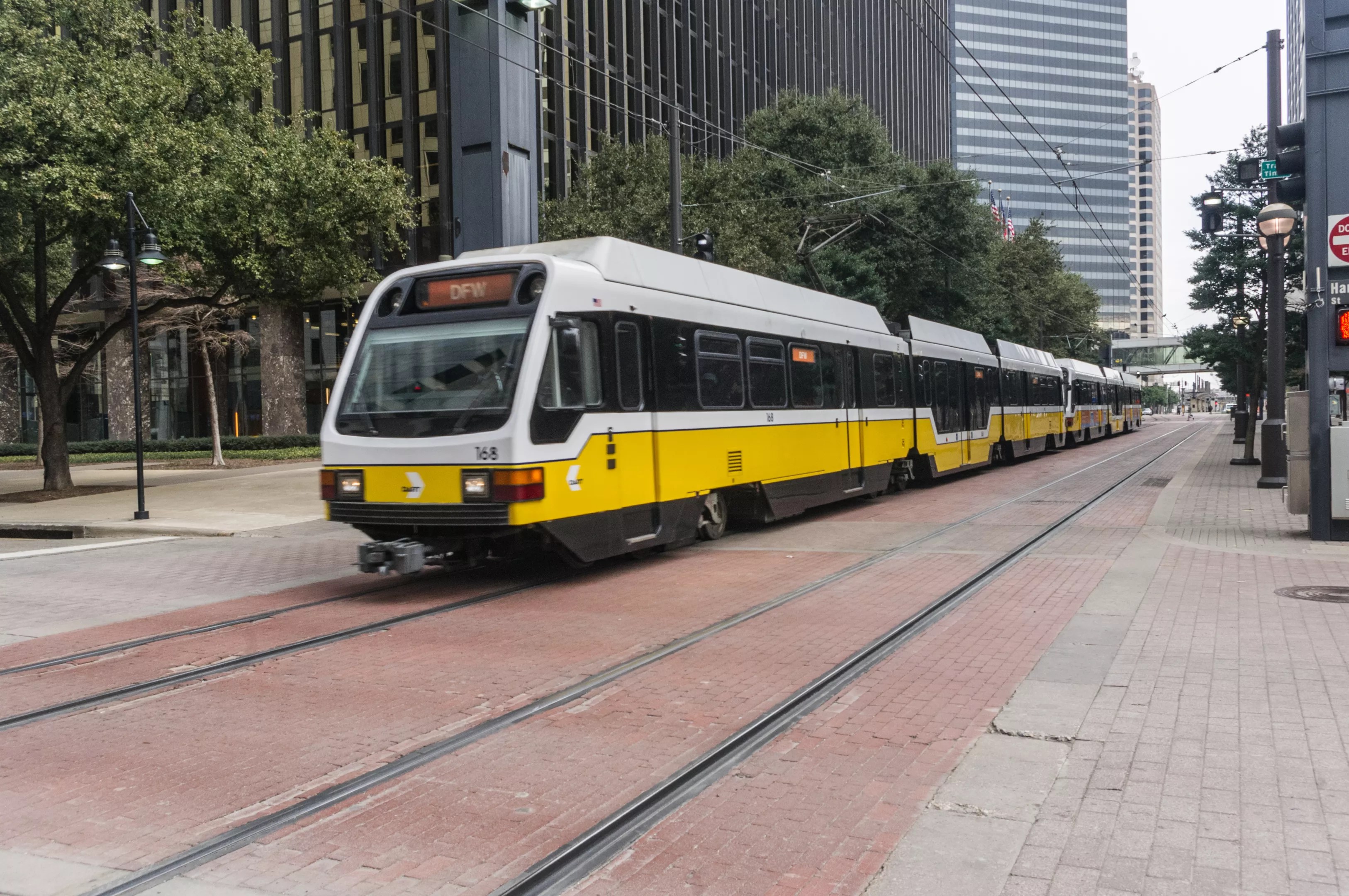
Adobe Stock

Audio By Carbonatix
North Texas’s largest public transport system, the Dallas Area Rapid Transit (DART), just barely skirted significant funding cuts this legislative session. Now, the time to ask for money for ongoing advancements is nigh, and U.S. Rep. Julie Johnson is doing just that, having requested $3 million in federal funding for renovation projects to increase an Uptown DART station’s accessibility features.
“This project will enhance the customer experience and align with the Federal Transit Administration’s priorities of safety, modernization, and equity while enhancing transit within some of North Texas’s most economically disadvantaged communities,” reads the request sent to the chairman of the House Committee on Appropriations.
The requested funding for the DART station project, which will replace two inclinators, diagonal moving elevators to assist people who cannot access staircases and escalators, as part of the transit system’s long-term initiative to improve its infrastructure, is one of 15 funding projects advocated for by Johnson.
“Each project was shaped by community input and reflects the priorities of those I represent in Congress,” said Johnson in a press release. “These aren’t just line items in a budget-they’re tools for growth and long-overdue investments in the future of North Texas. As Congress continues to determine spending for the next year, I’m proud to advocate for bringing tax dollars back home to support these critical investments.”
Will you step up to support Dallas Observer this year?
At the Dallas Observer, we’re small and scrappy — and we make the most of every dollar from our supporters. Right now, we’re $14,000 away from reaching our December 31 goal of $30,000. If you’ve ever learned something new, stayed informed, or felt more connected because of the Dallas Observer, now’s the time to give back.
The additional funding to DART comes weeks after the transit system issued a panicked memo against a House bill that could’ve significantly reduced member city contributions to regional transit authorities in Texas.
“This bill isn’t a tweak to funding. It’s a full-on dismantling of the DART system,” said Jeamy Molina, chief communications officer for DART, in a release advocating against the “DART Killer” bill. “The people of North Texas voted twice to fund a unified, regional transit system. House Bill 3187 completely ignores their voice and puts the future of public transportation in jeopardy.”
After widespread opposition and public outcry, the bill failed. In 2025, DART was operating on a $1.8 billion budget, a good chunk of which goes to salaries, but a small percentage will go to renovations and other utility costs.
The inclinator replacement, which began in April, is estimated to be completed around November. Until then, the transit system will provide a free bus bridge and shuttle service between stations to limit service interruptions. DART did not respond to media inquiries about any potential issues construction delays could create for persons in wheelchairs.
DART, though attacked for its lack of routes in a region that emphasizes highway travel, is a crucial service for disabled Dallasites who cannot drive, and proper accessibility to the stations is key to mobility.
“DART’s inclinators are critical to maintaining convenient and efficient station access,” said Johnson’s release. “Replacing the entire inclinator system will increase the operability and maintainability of this lift equipment and decrease downtime and inconvenience to DART riders. This is especially important for mobility-impaired rail customers.”
Accessibility And Public Transportation
Public transportation is a vital service for many disabled residents and has been a driving force in landmark accessibility expansion laws, says Christopher McGreal, a Dallas-based senior litigation attorney at Disability Rights Texas.
“Momentum really built in the 1980s, leading up to what now is a cornerstone law, which is the Americans With Disabilities Act, which was passed in the early 90s,” said McGreal. “One of the big drivers and examples of inaccessibility of the ADA was transportation. A lot of the main fixed-route buses did not have accessible lifts. You would literally have protests of individuals in their mobility device chaining themselves to the buses to be able to show the most dramatic effect of ‘we’re not having equal access to transportation.'”
Since then, federal regulations around accessible transportation have greatly expanded, including paratransit services, which include door-to-door services for qualifying passengers with disabilities. McGreal says both services are essential for the proper and fair mobility of people with disabilities.
“There is a good percentage, a healthy percentage of individuals that do rely on paratransit as well as the fixed line route,” said McGreal. “Persons with disabilities rely on that transit service.”
The lawyer reiterates that accessible transportation has long stood as a pillar of equitable accessibility for people with disabilities.
“Transportation has its own unique history and is symbolic, as well as practical, for persons with disabilities, particularly with physical disabilities… [who want] the same equal access that other transit riders use public transportation.”
As for inclinator replacements, McGreal says that keeping accessible infrastructure elements up to date is integral to providing for the disabled community.
“If you’re unable to [keep stations accessible], that’s almost a de facto denial of service.”